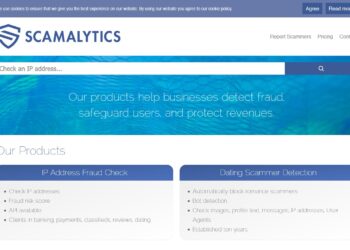Data has been valuable for a long time, but recently business data and analytics have become even more important.
The companies that can process queries faster, and gain a deeper understanding of customers, markets, product, and trends, enjoy a sharper competitive edge over their rivals. Data analytics insights are also crucial for spotting risks and opportunities as they emerge on the horizon, so organizations can act fast to mitigate or capitalize on them respectively.
The right data warehousing setup can be crucial in helping speed up response time and support easy-to-use, self-service analytics portals that enable all stakeholders to access data insights. While it’s common for data warehousing projects to grow up organically, with little premeditated planning, organizations are increasingly seeing the value of strategic data management that bakes in governance and enforces common policies across departments.
The last 18+ months of COVID-19 accelerated the move to cloud data warehousing. Many companies shifted hastily to remote working, and then had to transfer their data to cloud warehousing just as swiftly, so that remote teams could continue to access the data they need. There was little time for strategic data management planning, but now that the initial urgency has died down, CIOs and data science teams are giving it more attention.
Here are 4 reasons why strategic data management is so important for data warehousing success.
1.Remove friction from data retrieval
Business data is a boon for enterprises, but it’s not much use if stakeholders can’t find the data they need. The bigger the datasets and the more users there are, the harder it gets to find that one specific data set. When you’re no longer the only one storing data, you can’t simply rack your brains to remember where you put this file.
Additionally, without a data management strategy there’s nothing to prevent each user from following their own “intuitive” system for storing new data. Hours are wasted as people search for the information needed for a report, for example, and data silos can easily spring up and swallow data.
That’s why you need a cataloging system that ensures that everyone can find the datasets they seek. Your choice of Redshift vs Snowflake, or any other cloud data warehouse, is less important than implementing strong data management policies that bring order to your data.
2. Ensure data quality
Without strategic data management that enforces consistent data processing, you risk unreliable reports and predictions that skew your business decisions.
Once you have numerous people using the same data warehouse, you need to be sure that everyone defines data in the same way. For example, the sales team and the finance team in a subscription company might both record the value of renewals, but one of them includes the upsell amount and one does not. There’s a good chance you’ll end up with untrustworthy figures, because you just can’t be sure which values were recorded in the dataset you used.
When you set and enforce rules about data classification, it benefits all your stakeholders. Everyone can feel confident in the quality of the data and the reports they generate, which in turn has the knock on effect of increasing general trust in management decisions.
3. Open up access to data
Small-scale data warehousing projects often begin with the assumption that everyone involved knows the data equally well. There’s a feeling that there’s no need for a business data model or semantic layer, because all the stakeholders understand how the tables are structured or how to select statements in the visualization layer for reports.
But as your data warehousing scales up and more users join the system, the lack of management policies creates a sense of chaos. Teams can find themselves unable to use the data that’s right in front of them, because they don’t understand how it’s been structured. Strategic data management steps in to keep your data usable and accessible.
4. Strengthen data security
Enterprises are increasingly realizing that data is a strategic asset, and one that underpins the success of every digital transformation. That means that just like with all business assets, someone — typically the CIO or CISO — needs to know how much data there is, where it is stored, who controls its movements, who can access it, etc.
Strategic data management needs to be baked in from the get-go to ensure that the CIO is in control of your data warehousing. Without it, you risk data breaches and compliance issues because nobody is in a position to oversee data flow. Access controls, role-based permissions, and trustworthy defenses are all part of an effective and reliable data management plan.
Strategic data management is the bedrock of successful data warehousing
When your data warehousing is done right, it helps give you an edge over the competition and insight into the future of your vertical. Strong data warehouse consultants and strategic data management policies that enable easy, quick data retrieval, ensure data quality and security, and open up access to data insights are the backbone of every data warehousing project and set the stage for data analytics success.






